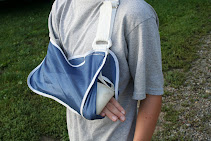Each year, thousands of product liability lawsuits are filed across the country. Some of the past lawsuits have reached verdicts, while others were resolved through settlements. Usually, faulty or sub-standard products are the main cause of most complaints.
Generally, the lawsuits are filed by consumers, consequently requiring the company in question to maintain safety standards and spend extra resources for product testing.
Below are some of the most remarkable product liability lawsuit in history that marked several changes in the current product safety standards and reliability:
McDonald’s coffee
Coffee is usually served and consumed hot, but not too hot to the point of burning one’s skin.
In 1994, Stella Liebeck filed a lawsuit against the fast food chain giant claiming that she suffered third degree burns on her thighs, groin and buttocks after a hot coffee accidentally poured into her. Liebeck claimed in her lawsuit that company served coffee at a temperature of 180 to 190 degree Fahrenheit while other companies served only at a reasonable 140 degrees Fahrenheit. The complainant was awarded with $2.7 million in damages and some $160,000.00 for her medical expenses.
Ledraplastic balancing ball
Balancing balls are purposely created primarily for athletes to protect their body from hard surfaces and literally for balancing while exercising. Unfortunately, it didn’t function as expected during a warm up exercise session of the Sacramento Kings team.
In 2009, Francisco Garcia of Sacramento Kings sued Ledraplastic after a 75-meter balancing ball burst into him while he was balancing along with weights. He sustained fractures in his right forearm and was unable to play for four months in his first year of contract with the Kings. Both Garcia and the Kings filed a product liability claim against the company. The complainants were awarded with $4 million in lost wages and some $29.6 million in damages.
Toyota cars
In 2010, Toyota model cars were involved in one of the biggest litigation cases in history, as well as a class action lawsuit. The automaker failed to install a safety feature called “brake to idle fail safe.” The safety feature was used to reduce the chances of an accident once the accelerator malfunctioned. Toyota agreed to pay a staggering amount of $1.1 billion to settle the lawsuits.
Blitz gas cans
Blitz was formerly the largest producer of portable gas cans in the U.S. but the company was forced to file bankruptcy in 2012 after paying an average of $4 million each of the more than 30 complainants in a series of product liability lawsuits. Complainants claimed that the gas cans would explode when used to pour gas to start a fire. Now the company ceased its operation.
Remington rifle models 700 and 710
Since 1979 until present, Remington has received thousands of customer complaints product liability claims. Unfortunately, instead of admitting the defect and correct what has went wrong in its products, the company chose to pay millions in settlements. Complainants claimed in their lawsuit that the rifle model 700 and 710 were proven to have faulty fire control system which can cause it to automatically fire even the trigger was not pulled.
Generally, product liability claims arise when someone has been injured to an apparent product defect. However, many personal injury lawyers remind that it is not always necessary that someone has to be injured to be able to file such claim. Keep in mind that if a product that is designed to function for a particular function but failed or malfunction, it clearly imposes threat. Therefore, everybody must fully understand the three types of product defects – the manufacturing defect, design defect and warning defects.
Generally, the lawsuits are filed by consumers, consequently requiring the company in question to maintain safety standards and spend extra resources for product testing.
Below are some of the most remarkable product liability lawsuit in history that marked several changes in the current product safety standards and reliability:
McDonald’s coffee
Coffee is usually served and consumed hot, but not too hot to the point of burning one’s skin.
In 1994, Stella Liebeck filed a lawsuit against the fast food chain giant claiming that she suffered third degree burns on her thighs, groin and buttocks after a hot coffee accidentally poured into her. Liebeck claimed in her lawsuit that company served coffee at a temperature of 180 to 190 degree Fahrenheit while other companies served only at a reasonable 140 degrees Fahrenheit. The complainant was awarded with $2.7 million in damages and some $160,000.00 for her medical expenses.
Ledraplastic balancing ball
Balancing balls are purposely created primarily for athletes to protect their body from hard surfaces and literally for balancing while exercising. Unfortunately, it didn’t function as expected during a warm up exercise session of the Sacramento Kings team.
In 2009, Francisco Garcia of Sacramento Kings sued Ledraplastic after a 75-meter balancing ball burst into him while he was balancing along with weights. He sustained fractures in his right forearm and was unable to play for four months in his first year of contract with the Kings. Both Garcia and the Kings filed a product liability claim against the company. The complainants were awarded with $4 million in lost wages and some $29.6 million in damages.
Toyota cars
In 2010, Toyota model cars were involved in one of the biggest litigation cases in history, as well as a class action lawsuit. The automaker failed to install a safety feature called “brake to idle fail safe.” The safety feature was used to reduce the chances of an accident once the accelerator malfunctioned. Toyota agreed to pay a staggering amount of $1.1 billion to settle the lawsuits.
Blitz gas cans
Blitz was formerly the largest producer of portable gas cans in the U.S. but the company was forced to file bankruptcy in 2012 after paying an average of $4 million each of the more than 30 complainants in a series of product liability lawsuits. Complainants claimed that the gas cans would explode when used to pour gas to start a fire. Now the company ceased its operation.
Remington rifle models 700 and 710
Since 1979 until present, Remington has received thousands of customer complaints product liability claims. Unfortunately, instead of admitting the defect and correct what has went wrong in its products, the company chose to pay millions in settlements. Complainants claimed in their lawsuit that the rifle model 700 and 710 were proven to have faulty fire control system which can cause it to automatically fire even the trigger was not pulled.
Generally, product liability claims arise when someone has been injured to an apparent product defect. However, many personal injury lawyers remind that it is not always necessary that someone has to be injured to be able to file such claim. Keep in mind that if a product that is designed to function for a particular function but failed or malfunction, it clearly imposes threat. Therefore, everybody must fully understand the three types of product defects – the manufacturing defect, design defect and warning defects.







